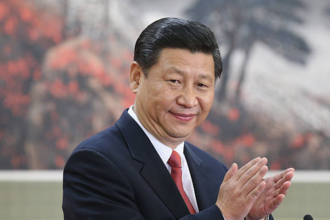Once war-torn, Vietnam has changed dramatically in the past few decades. With a consistent growth rate and a rising importance in world trade, the Vietnamese economy today is among the most dynamic in Southeast Asia. Though the nation has made amazing development, it still has possibilities and problems that could define its economic destiny. This paper investigates Vietnam’s development from war-torn destruction to economic vibrancy and examines the several opportunities and difficulties its economy will present.
- Development of the Vietnam Economic Growth and Difficulties following the war
- Important Factors Affecting the Development of the Vietnamese Economy: Problems and Prospects
- Diverse difficulties in managing the Growth and Challenges of the Vietnamese economy
- Looking ahead: The Vietnam Economic Growth and Challenges
Development of the Vietnam Economic Growth and Difficulties following the war
The Vietnam War left the nation in difficulty rebuilding. The obvious effects of almost two decades of conflict on infrastructure, businesses, and the economy made the Vietnam economy growth and problems clear-cut. The government had the challenging chore of recovery when the economy was in disarray. Notwithstanding these challenges, Vietnam has come a long way over time from a war-torn economy to one of the fastest-growing in the area.
Key changes in the 1980s set Vietnam on a path toward economic recovery. Following decades of central planning, the government unveiled the “doi moi” (renovational) program in 1986. This change to a market-driven economy opened the path for private business and foreign investment, which became critical in helping the Vietnamese economy to overcome obstacles and flourish.
Agricultural reforms, industrialization, and a change toward a more open trade policy drove Vietnam’s economic progress throughout time mostly. The nation also made efforts to upgrade its infrastructure and draw foreign companies, therefore laying the foundation for future expansion. The Vietnam economy’s development and problems became a tale of metamorphosis as the nation progressively became a major global industrial base.
Important Factors Affecting the Development of the Vietnamese Economy: Problems and Prospects
Several important elements greatly affect the problems and growth in the Vietnamese economy. Vietnam’s success can be mostly attributed to its growing manufacturing industry. Particularly for electronics, textiles, and footwear, the nation has grown to be a worldwide industrial center. Businesses from throughout the world—especially from China, South Korea, and the United States—have been looking to Vietnam more and more for reasonably priced, premium products.
Vietnam has diversified its economy by moving from agriculture to manufacturing, generating employment and raising the quality of living for millions of people. The Vietnam economy’s development and problems have been greatly driven by the nation’s emphasis on luring foreign direct investment (FDI). Thanks in great part to its low labor costs, strategic position, and business environment, the nation has become one of the top FDI destinations in Southeast Asia in recent years.
Apart from production, the technological industry has become rather important for Vietnam’s economic development. Using its developing infrastructure and trained labor, companies including Samsung, LG, and Intel have built up significant facilities in the nation. With Vietnam positioned as a major participant in the worldwide tech supply chain, the move towards high-tech sectors in recent years signals a turning point in Vietnam’s economic growth and problems.
Vietnam’s young and vibrant workforce is another factor fueling its economic development. Vietnam possesses a workforce ready to help the country develop, with a median age of just 33. Not only do labor-intensive businesses greatly benefit from this young workforce, but also the expanding service and technology sectors. Vietnam’s young population plays a major role in the next global economic trends as the fastest-growing population in the world ages. Read another article on Vietnamese Tycoon Truong
Diverse difficulties in managing the Growth and Challenges of the Vietnamese economy
Vietnam still faces major obstacles that can stop its ongoing progress, even with its amazing economic growth. The nation’s reliance on world trade raises some of the most urgent issues. Being a tiny open economy, Vietnam mostly depends on exports, especially to markets in China, the United States, and the European Union. Nonetheless, as tariffs and trade policies are changing quickly, the continuous trade war between China and the United States generates questions for the development of the Vietnamese economy.
Vietnam has been compelled by the U.S.-China trade conflict to carefully balance its ties to both of the biggest economies in the world. On the one hand, as American businesses seek to diversify their supply chains, the nation gains from being a substitute manufacturing base for China. Vietnam, on the other hand, is wary about straying from its connection with China, a significant commercial partner. One of the most important obstacles to the Vietnam economy’s development, as well as the difficulties in the present geopolitical scene, is negotiating this delicate balance.
Apart from worldwide commercial problems, Vietnam still has certain internal problems. Infrastructure is still a major issue since the nation has to make large expenditures to improve its ports, highways, and energy sources. Although Vietnam’s infrastructure is still not on par with other industrialized nations in the region, even if progress has been made, this can hinder the seamless flow of supply chains and lower the nation’s competitiveness.
The educational system of Vietnam presents another difficulty since it has not yet fully equipped the workforce with the required skills for the fast expanding industries of the nation. The nation will have to enhance its educational and vocational training programs as it moves into higher-value sectors such technology and services to guarantee that its workforce is ready for the pressures of a contemporary economy.
At last, environmental issues also impede the Vietnamese economy’s growth and pose challenges. Deforestation and major pollution brought on by fast industrialization jeopardize the long-term viability of the nation. Future development of Vietnam depends on its ability to strike a balance between environmental protection and economic growth.
Looking ahead: The Vietnam Economic Growth and Challenges
Looking ahead, the Vietnam economy’s difficulties and development have great promise; nonetheless, the nation has to negotiate a fast-changing global scene. Vietnam has to concentrate on diversifying its economy and advancing the value chain if it is to keep on its present course of growth. Ensuring the nation stays competitive in the worldwide market will depend mostly on investments in high-tech sectors, renewable energy, and creativity.
To keep drawing foreign investment and growing its industrial base, Vietnam also depends on bettering its infrastructure and filling the skills void in its workforce. Though more work is required to produce a more flexible and open economy, the government has already made progress in reducing bureaucratic red tape and modernizing its business climate.
The Vietnam economy development and problems will still be much influenced by Vietnam’s relationships with China and the United States. The administration will have to keep treading a diplomatic tightrope to guarantee it keeps solid trading ties with both countries. To make sure the nation stays appealing to foreign companies, this will need for calculated infrastructure and technological investments.
Ultimately, the rise and difficulties of the Vietnamese economy point to the country’s resiliency and flexibility. Although there are still a lot of challenges ahead, Vietnam’s development during the past several years indicates that, with the correct infrastructure, education, and technology investments, the nation is likely to keep being an economic powerhouse in Southeast Asia. To guarantee Vietnam’s ongoing success and prosperity, the government, business sector, and foreign partners will need to act boldly going forward.








